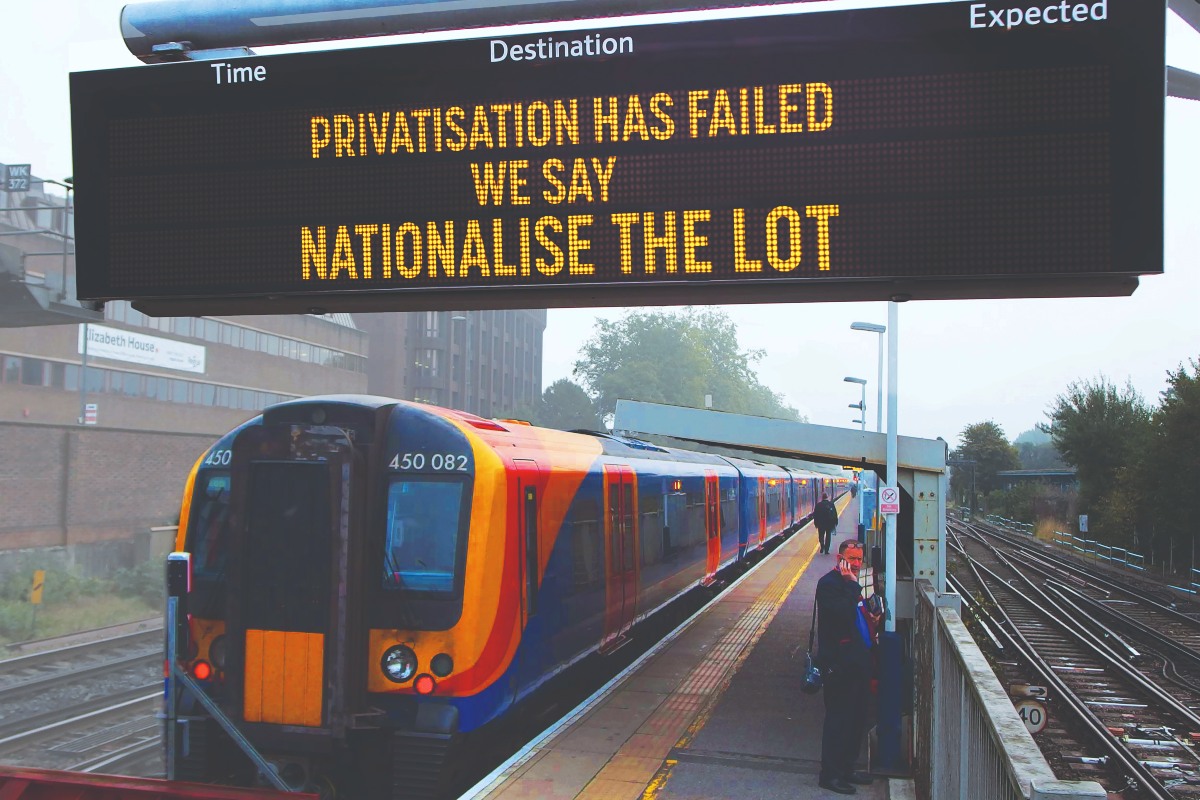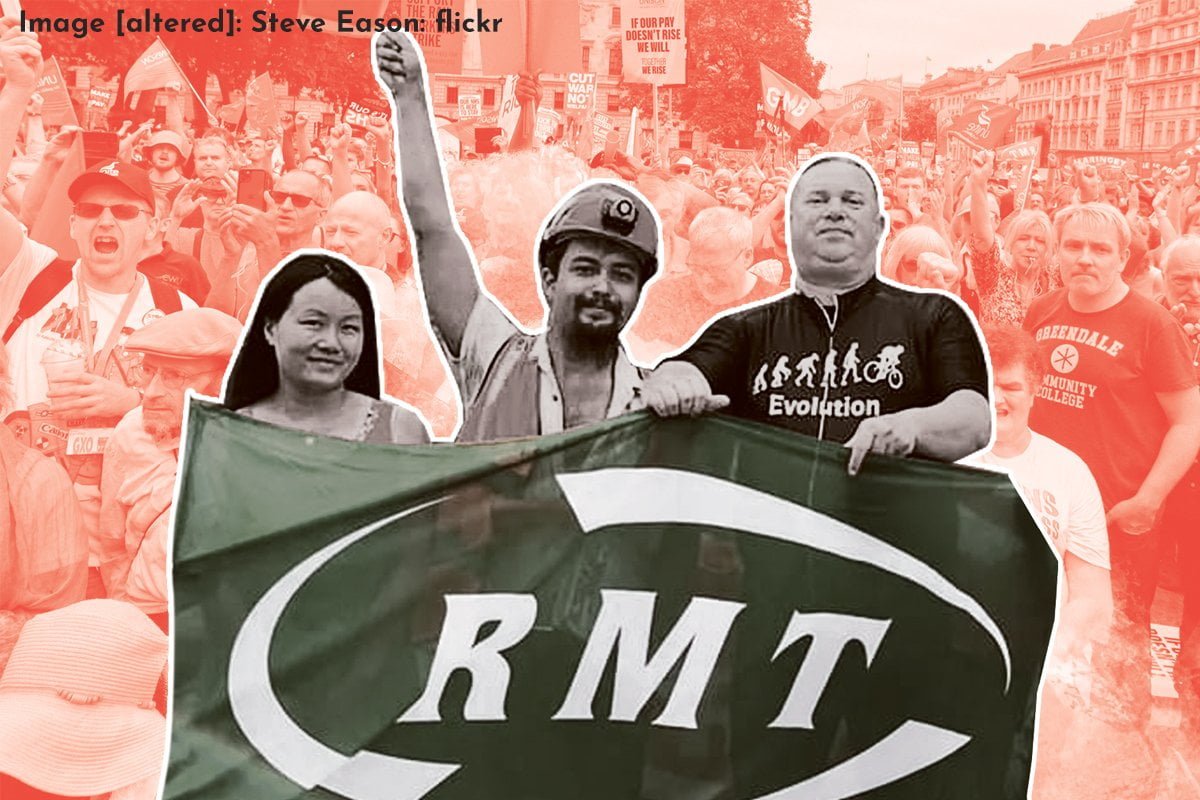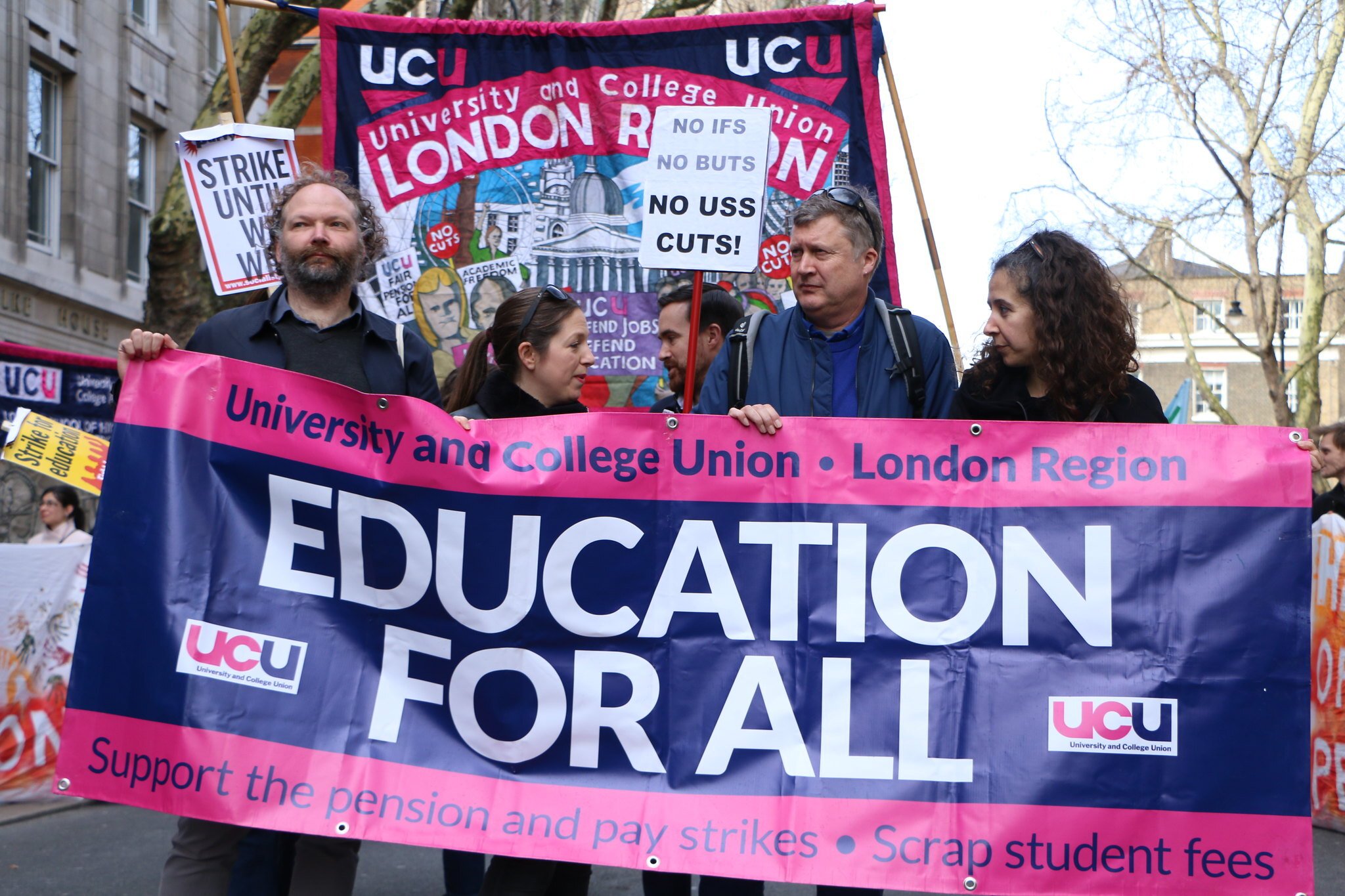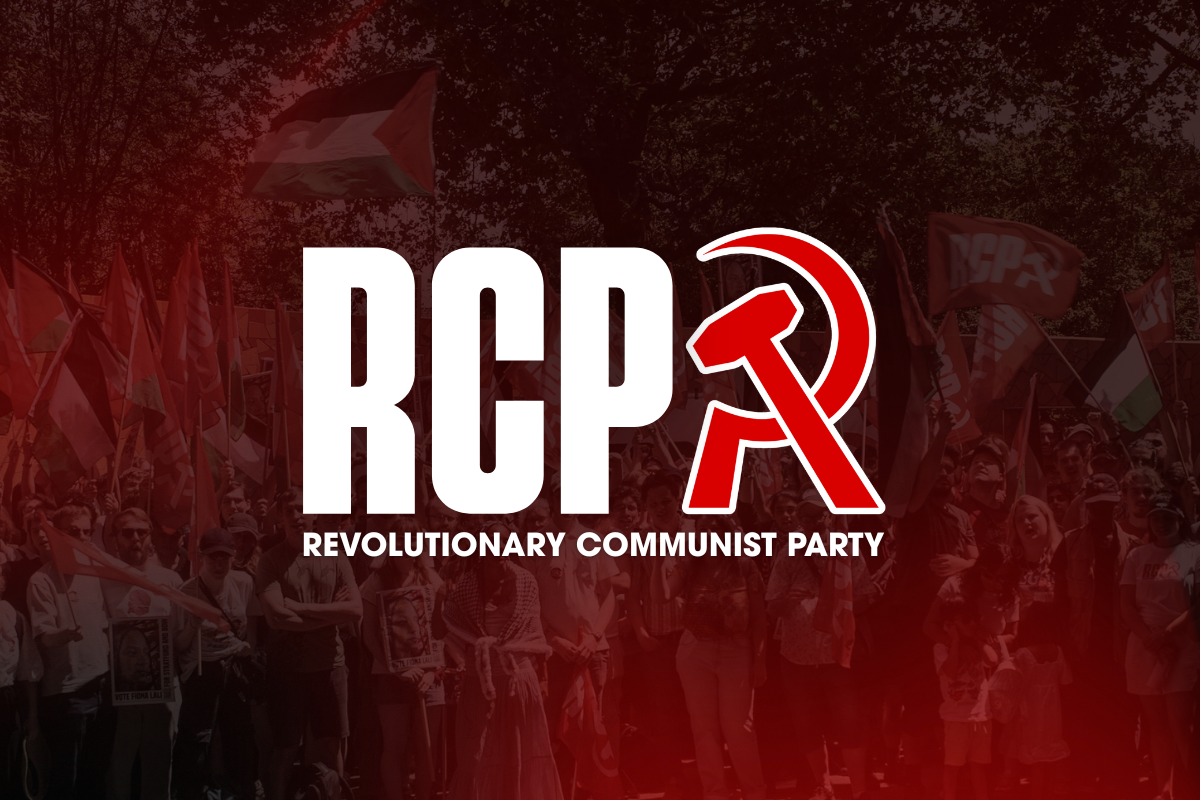Strike action by railway workers has continued this month, with rail unions coordinating walkouts. But the bosses are digging in their heels, refusing to budge. To overcome this intransigence, the movement must be broadened and escalated.
40,000 RMT rail workers undertook their latest rounds of strike action on 1 and 8 October, in the union’s ongoing dispute over pay, pensions, jobs, and conditions at Network Rail (NR) and 14 train operating companies (TOC).
Notably, the first of the month saw coordinated action across the trade union movement, with TSSA members at four TOCs, ASLEF drivers at 12 TOCs, and 115,000 CWU workers at Royal Mail all joining together to strike.
This was combined with around 50 rallies in cities and towns across the country, organised by the ‘Enough is Enough’ campaign.
This points the way forward in the fight to beat back the bosses’ offensive, and to kick out Truss’ Tories.
Last Saturday saw demonstrations across the country in support of striking workers, and in protest against the cost-of-living crisis. With the Tories and their system in meltdown, the stage is set for a bitter winter of discontent.#EnoughIsEnoughhttps://t.co/usdlQecv1f pic.twitter.com/0fzI4wgdAS
— Socialist Appeal (@socialist_app) October 4, 2022
Profit
The 14 TOCs in dispute with the RMT are yet to make any offer on pay. Meanwhile, NR remains steadfast on its programme of maintenance and job cuts. This is in exchange for a measly 4% pay rise, which CEO Andrew Haines himself admits is a real-terms pay cut.
“I wish we could afford to give you an inflation pay award but we can’t,” stated Tim Shoveller, NR managing director, in the run-up to the strikes.
Strangely enough, however, there is plenty of money to be found when the bosses’ pay is concerned.
“CEO and director pay going through the roof and everyone else can’t afford their rent and their bills.”@RMTunion Eddie Dempsey talking about Tory austerity for the massespic.twitter.com/5pmZnUKGhm
— RMT (@RMTunion) October 3, 2022
In 2021, CEO pay at First Group and Angel Trains went up by 167% and 233%, to £2.2 million and £1 million respectively. At the same time, the financial officer at First Group got a 275% increase, to £1.9 million. Talk about inflation-busting!
According to the RMT, just 13 top TOC bosses received over £19 million between them in 2020-2022.
But even this pales in comparison to the dividends poured out to the shareholders of the parasitic rolling stock companies. These stood at £950 million in 2020, despite the collapse in passenger numbers due to the pandemic.
These figures alone show that enough profit is extracted from UK railways each year both to meet workers’ demands, and to invest in real modernisation of the country’s archaic rail network.
Cuts
Instead, the capitalists and their political representatives in government would prefer to cannibalise the railways for short-term super-profits.
“No ifs, no buts,” Andrew Haines has asserted, “we will never propose any ideas that have a negative impact on safety.”
But the bosses’ proposals would involve the lay-off of a third of the workforce and the halving of maintenance schedules. To be sure, the safety of Haines and co. will not be negatively impacted by such measures, nor will his £600k salary.
For rail workers, the experience is quite different. In a survey by the RMT of 10,000 of its members, 70% of NR workers reported that they had experienced cuts in the last year. Meanwhile, an overwhelming 90% agreed that the proposed cuts will put passengers at greater risk.
“The amount of jobs in backlog is ridiculous, and the amount of staff we already don’t have is ridiculous also,” one worker stated. “To now cut back even further would be nothing short of unsafe.” Such concerns are abundant.
If anyone knows how to conduct work properly and safely, it is us, the rail workers, not the bosses. It is therefore workers who should be the ones in control of budgets and planning.
Indeed, if any ‘efficiencies’ need to be found, we should start by applying them at the senior management level.
Nationalisation

This gulf between rail workers and bosses has made nationalisation a popular demand. In one poll from August, 68% of the public stated that they would back renationalisation of Britain’s railways.
As a result, the Labour Party recently committed to a nationalised railway network. The RMT has welcomed the move, publishing an article in its latest bulletin on the history of rail nationalisation in the UK.
But what kind of nationalisation are we after? If this history shows anything, it is that the former nationalised British Rail – although a great gain of Attlee’s Labour government – did not fundamentally challenge private property and the profit system.
Instead, nationalisation under capitalism functioned along the logic of ‘nationalise the losses, privatise the gains’.
As the RMT article itself states: “The exchange of potentially worthless stock for government gilts based on a valuation during an artificially created boom [from government intervention in the war] was, in fact, a very good deal.”
But when the railway was sold off, it was undervalued, and was immediately plundered by Railtrack and contractors in order to increase profitability, leading to a string of accidents.
In the interim period, the old management remained in place. Meanwhile, the Tories set up the British Railways Board “to turn the railways from a public service into a ‘profitable’ business”.
This should be a warning for today. Already, rail workers fear that the Tories’ semi-aborted, semi-nationalisation mish-mash plan for ‘Great British Railways’ will act as a cover for them to push through all of the cuts we are currently fighting. A Labour government facing the present crisis would come under pressure to do the same.
Why should any compensation be handed over to the fat cats who have sat on billions of pounds that rail workers created, and who have dictated cuts to our jobs, pay, and conditions?
Rather than a ‘bailout’ nationalisation, we must fight for the common ownership of the rail network, without indemnification to these parasites, and to be operated under the democratic control of workers themselves.
Where next?
The term for the RMT’s current strike mandate will soon be ending. And without any serious deal on the table from the bosses, many will ask: ‘Where next?’
We must fight for a strong return on the next ballot, in order to give the bosses a clear signal that our members will hold firm for another six months.
But the ballot will be all the stronger, the more confident the rank-and-file is that we have a strategy to win.
The action on 1 October was a step forward in this respect. On the one hand, it united over 150,000 workers across the transport and communication sectors. And on the other, it linked these struggles with broader political demands. Both these factors provided confidence to workers on strike.
The movement must be broadened from here. We therefore welcome the intention of the RMT, jointly with other unions, to call for coordinated industrial action and protest at the TUC Conference.
Such a mass united strike movement must advance bold political demands – including nationalisation and a sliding scale of wages, so that workers’ pay rises with inflation.
All-out action

But with the rail bosses refusing to budge between strike dates, it is also vital that we escalate the strike by extending it.
This year, Arriva bus drivers in Merseyside won an 11.1% deal through a month-long all-out strike. Similarly, Coventry bin workers struck victory after months of bitter continuous action. And CHEP pallet workers won 9% and more through a five-month indefinite strike.
Even criminal barristers have wrung an improved offer from the government thanks to all-out action.
If the rail bosses won’t move as a result of one or two days of strike action per month, then we must prepare to escalate and force them to concede.
Coordinated with other unions, we could have a rolling wave of strikes across different unions, for weeks if necessary, in order to cause maximum disruption, and to put the bosses and government on the backfoot.
With such a fighting strategy, we can mobilise the rank and file for the struggles ahead.
The pressure is on. Our union must achieve a victory – not just for rail workers, but for the whole working class.






